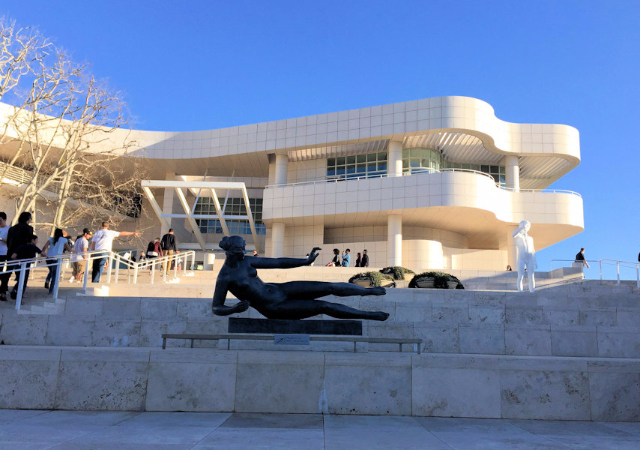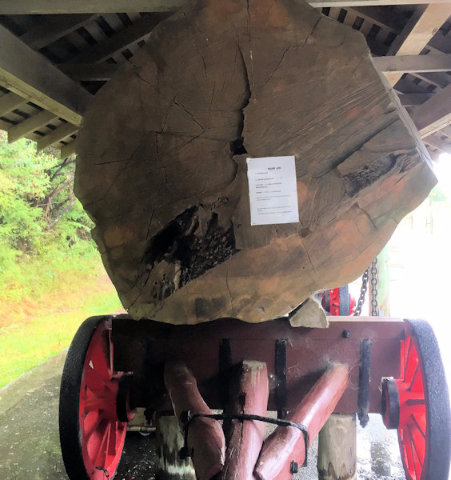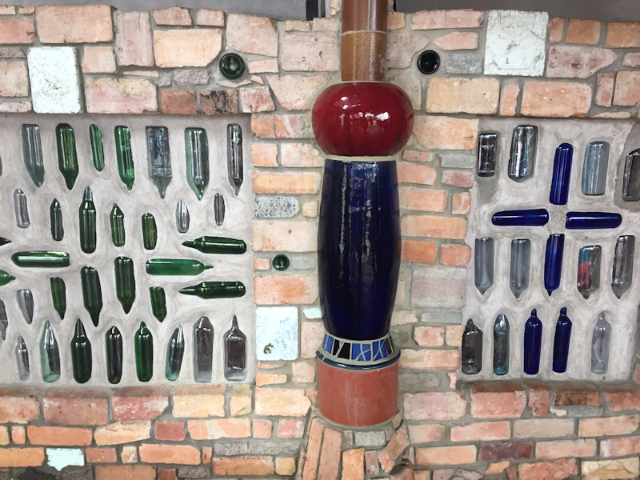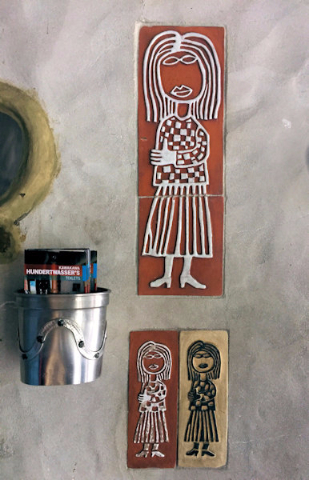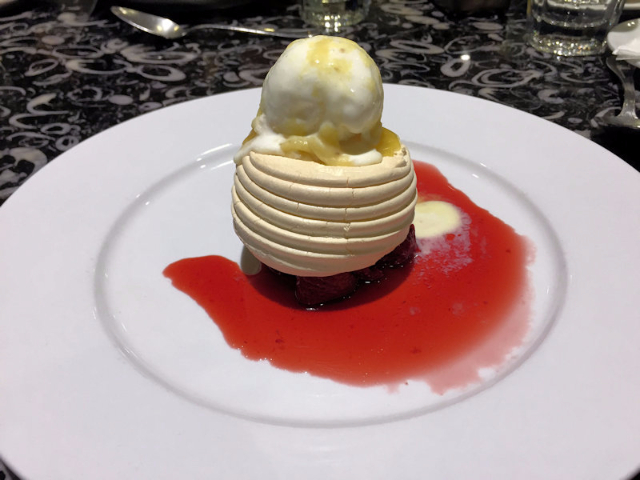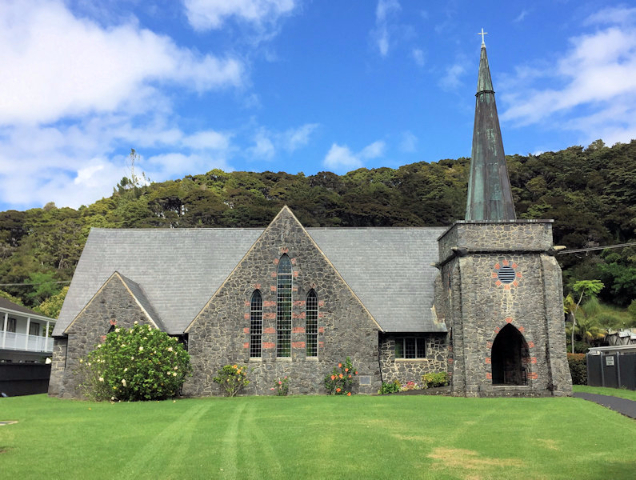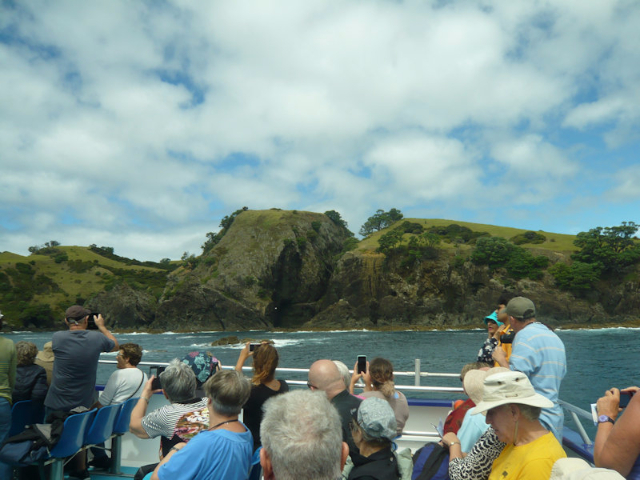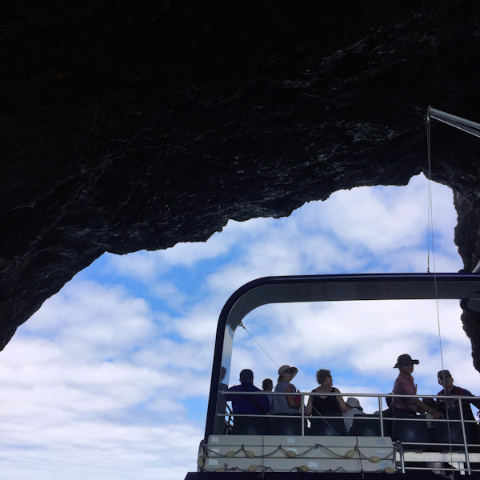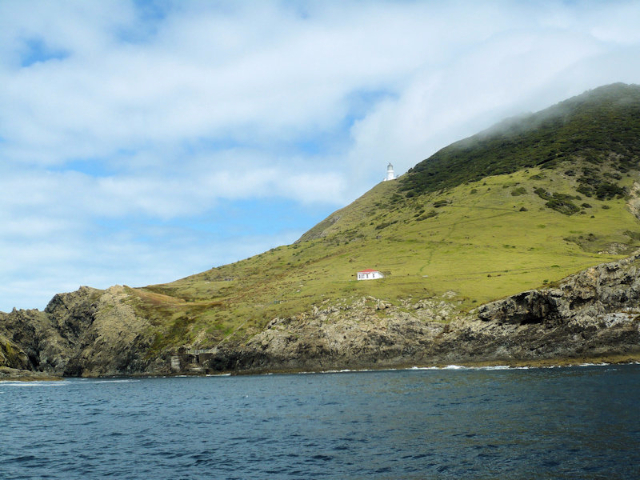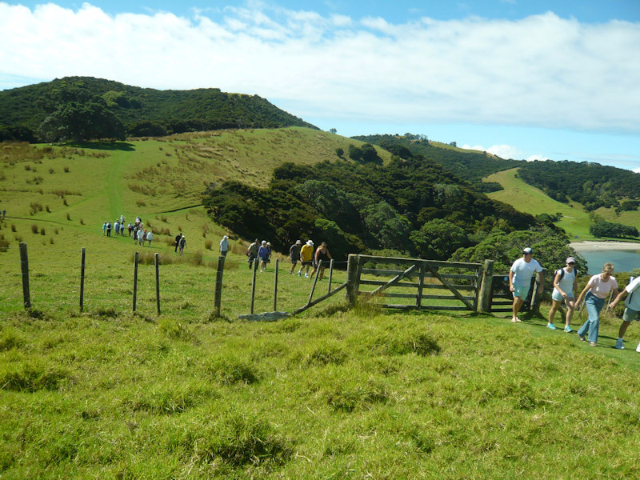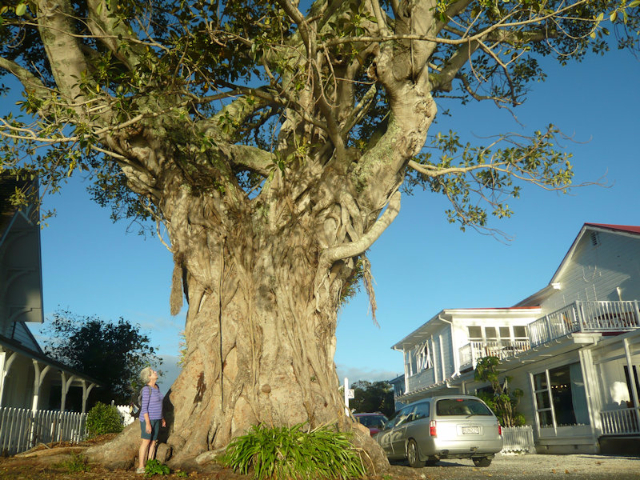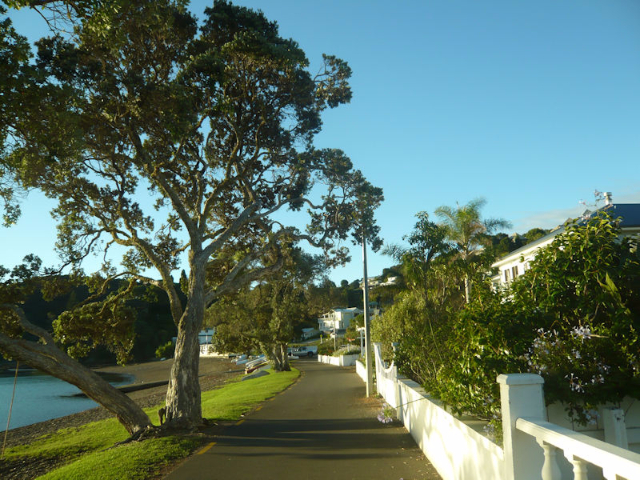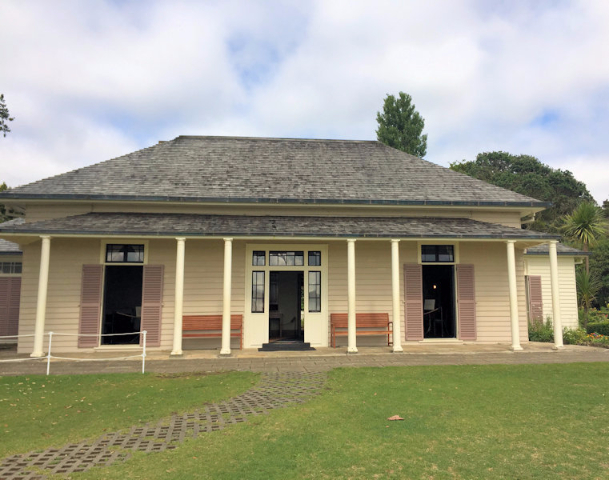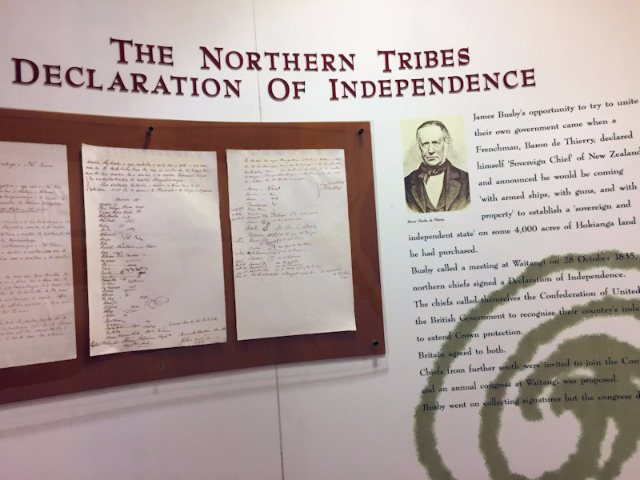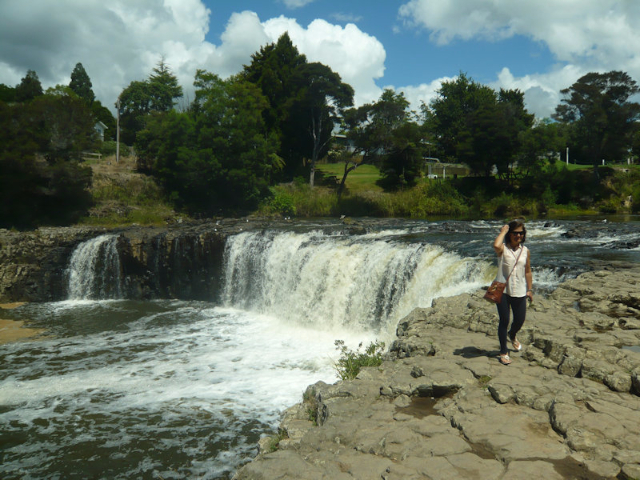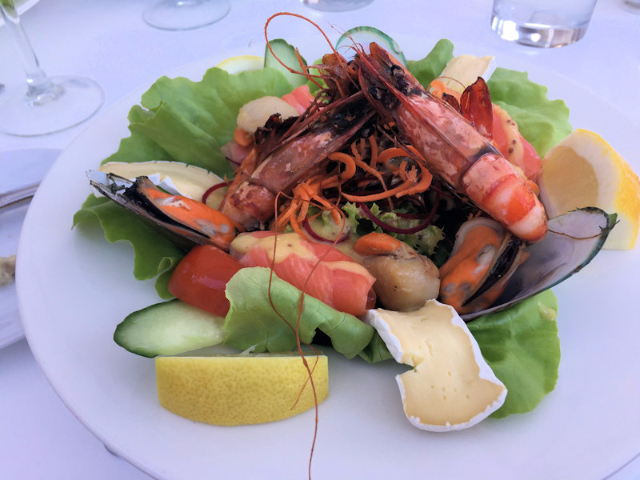New Zealand: North Island
Bay of Islands
By: Zeren Earls - Apr 12, 2017
This year’s winter get away took me to New Zealand for three weeks in February. I flew from Boston between two blizzards, missing the second one by one day, and landed in Los Angeles to 61-degree weather! Besides enjoying the spring-like climate, staying in Los Angeles for three days was an opportunity to have an early birthday celebration with friends, as well as visit several of the city’s great museums the Los Angeles County Museum (LACMA), the Getty and the Hammer.
Much to my surprise, the 12-hour direct flight from LA to Auckland on Air New Zealand was quite comfortable. Despite my economy-class seat, I had ample space to stretch my legs, allowing me to sleep about six hours on the way as we crossed the International Date Line. Thus losing a day, the twelve of us who had signed up for a pre-trip to the Bay of Islands landed at Auckland Airport, where we were met by our trip leader, Victoria. A tall, attractive Kiwi of stocky build, she led us to the van for the transfer to Paihia, the main town on the Bay of Islands. Although the outdoor temperature was 57 degrees, she cautioned that it was possible to have all four seasons in one day in New Zealand and to have an umbrella handy at all times. She also reminded us that New Zealanders drove on the left and to be mindful while crossing the street.
During the five-hour scenic trip north, we stopped at the Parry Kauri Park to explore the island’s native plants and kauri trees, known by their Maori name. It started to rain, adding an extra layer of caution to our walk through the park, as we balanced on wet wooden steps covered with screen wire to prevent slipping. The mighty coniferous kauri trees, some over 800 years old, have been under protection from loggers, who use them to build canoes and houses.
Following a lunch break in Whangarei, the northernmost city in New Zealand, we stopped by a major tourist attraction – public toilets designed by Austrian expatriate architect and ecologist Hundertwasser, who lived in Kawakawa from 1975 until his death in 2000. On the main street of the town, the decorative toilet block with ceramic columns and garden roof features recycled materials from the local community, such as bottles and bricks, along with tiles made by students. Arranged in wavy lines and irregular patterns, they lend a colorful exuberance to the building, attracting many visitors to photograph the international artwork.
The final destination of the day was Paihia Pacific Resort Hotel, our home for the next three nights. The friendly staff and the resort setting made up for the exhaustion of the long journey. A welcome dinner at the hotel introduced us to local fish, named John Dory, and to New Zealand’s unique dessert, Pavlova – a fruity, crusty meringue with fresh cream and caramel sauce – named after the Russian ballerina following her visit.
While strolling through the market during time on my own the next morning, I came upon a Fair-Trade craft store, where I made my first purchase – suede hand warmers lined with possum fur. A marsupial, possum is plentiful in New Zealand. As I then walked along the ochre-colored coastline, dotted with sailboats, St. Paul’s Anglican Church beckoned across the way with its attractive stone façade. Built in 1925, the church’s massive walls feature locally quarried stone. The equally attractive interior has stained glass windows above the altar, featuring native birds.
The highlight of our day was a catamaran cruise in the Bay of Islands. Long white cloud formations enhanced the spectacle of coastal scenery as we cruised along blue-green waters. Calm seas let us go right through the 60-foot hole of Hole in the Rock, an island carved at sea level by wind and waves over time. Following a shoreline of sandy beaches, we then arrived at Otehei Bay, where we disembarked for a hike up the hill amidst emerald green fields. Various lookout points provided fantastic views of lagoons below and other islands at a distance.
The cruise ended at the peninsula town of Russell, New Zealand’s first European settlement, seaport, and capital. The town thus boasts many historical buildings, such as the country’s oldest house of worship, Christ Church. The attractive coastal walk features hotels and restaurants in historical settings, including the famed Duke of Marlborough, which held a reservation for my birthday dinner. Seated at the head of the table, I was treated to a champagne toast and gifts from Victoria on behalf of Overseas Adventure Travel – a tea-towel with a hand-painted image of a multi-colored kiwi and an attractive ceramic dish, shaped as a teapot to hold tea bags. We returned to Paihia on the passenger ferry.
On the final day of the pre-trip, we visited the Waitangi Treaty House and Grounds, a short ride away from Paihia. It was here that the representatives of the British Crown and Maori chiefs of the North and South Islands signed on the 6th of February 1840 the Treaty of Waitangi, which transformed the homeland called Aotearoa (home of the long white cloud) into the nation of New Zealand by declaration of British Sovereignty. For the Maori, who came from Eastern Polynesia, the tribal group belonged to the land and had responsibilities for it. For the British, land was a commodity that individuals could own and trade. Over time these differences created tensions.
Besides the restored four-room Treaty House, the grounds hold period homes, a museum, a café, a visitor center, and several canoes, including one for more than 80 warriors. The museum features a wooden bust of Chief Hongi Hika, carved by Hongi himself; the markings, or moko, on his skin detail his identity and relationship to his world. Before the Maori language had a written form, introduced by the British, carving, weaving, and painting were the visual references for their language.
Harakeke is the wonder plant, native to the island and plentiful on the Treaty Grounds. The Maori use it to plait baskets and make fishing nets, capes, and footwear. Stripped for its fiber, the plant is also used for weaving garments. Its roots, leaves, and glutinous sap have medicinal uses.
On the way back to Paihia, we stopped by Haruru Falls, a small picturesque waterfall just outside the city. The rest of the afternoon was spent packing and having dinner on our own, which for me was a plateful of delicious tiger prawns. We left for Auckland early the next morning to meet the rest of our group and begin our main trip with great anticipation.
(To be continued)


